Exploring WebAssembly (WASM)
Future WebAssembly in Cloud
WASM Runtimes
WebAssembly (WASM) has evolved from a browser-only technology into a versatile, high-performance solution that runs on servers, desktops, and even embedded devices. In this guide, we’ll explore what a WASM runtime is, how it operates, and the most popular runtimes you can choose from.
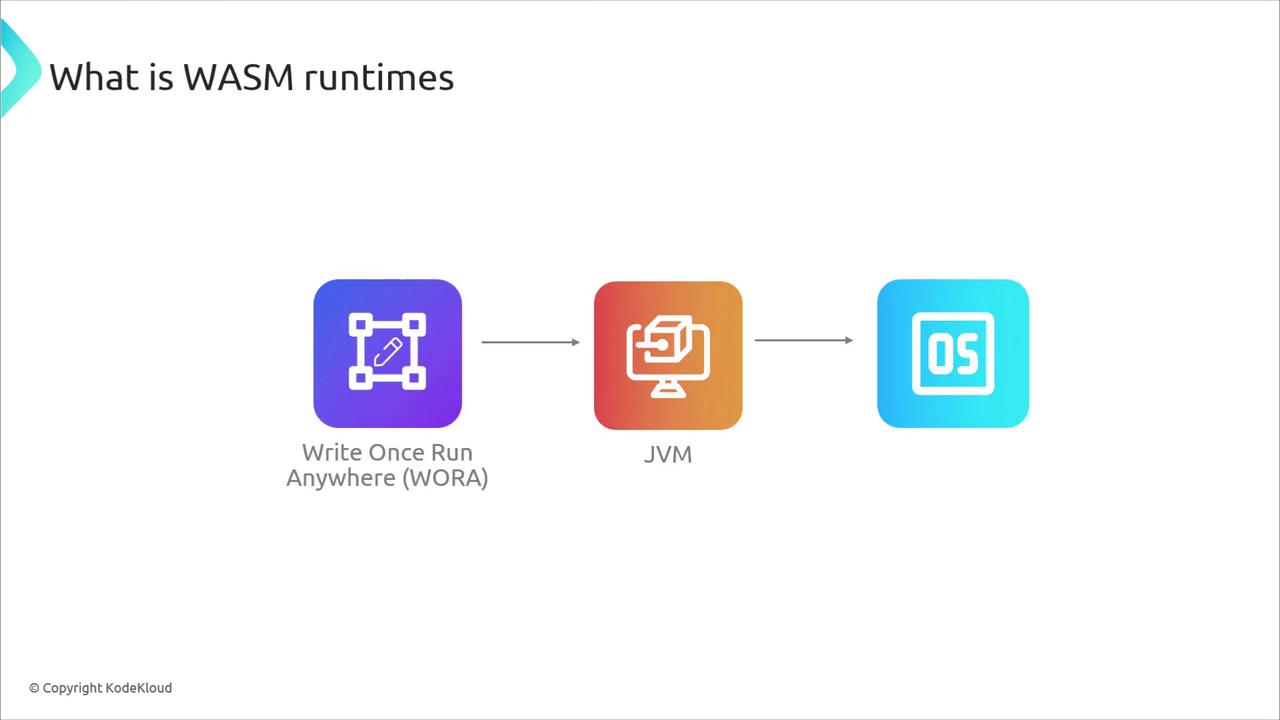
What Is a WASM Runtime?
A WebAssembly runtime is the execution environment that loads, validates, compiles, and runs a .wasm module. While browsers include an embedded WASM engine, standalone runtimes enable you to run the same modules on:
- Servers
- Desktops
- Edge devices and IoT
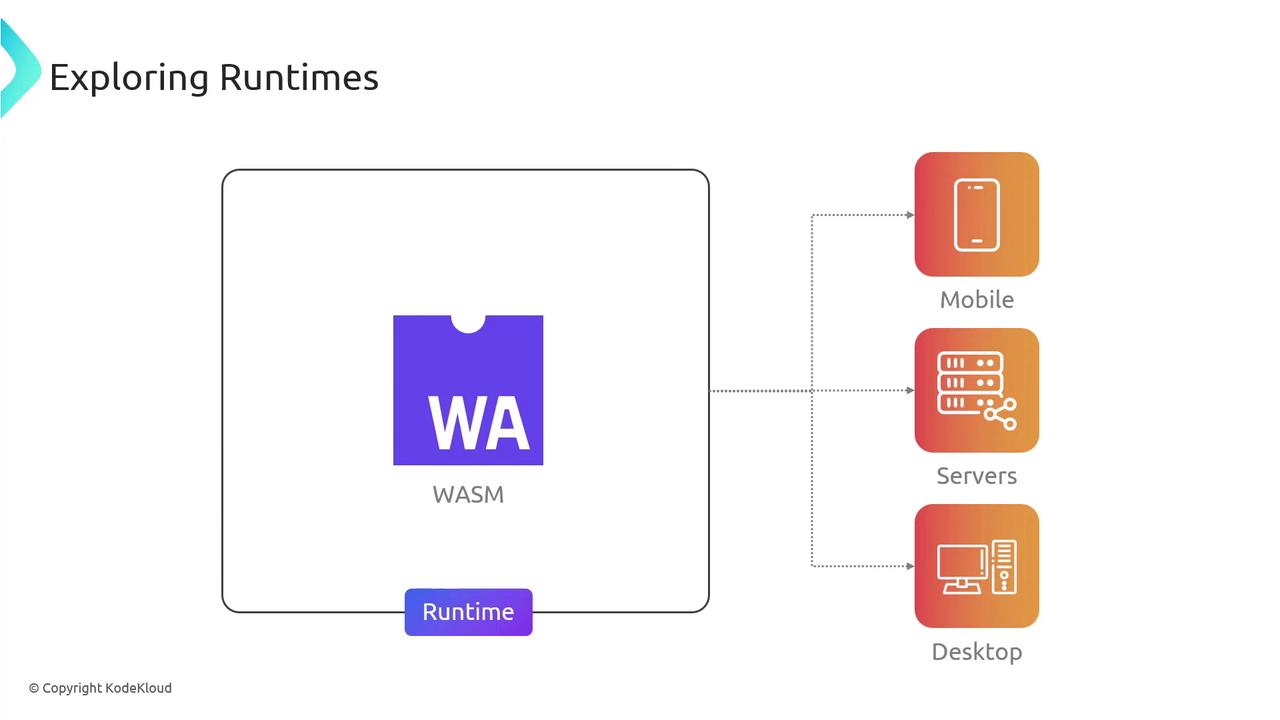
The Execution Pipeline
Load & Decode
The runtime unpacks and verifies the WASM binary.Compile to Machine Code
A compiler backend (e.g., Cranelift) translates WASM to native instructions.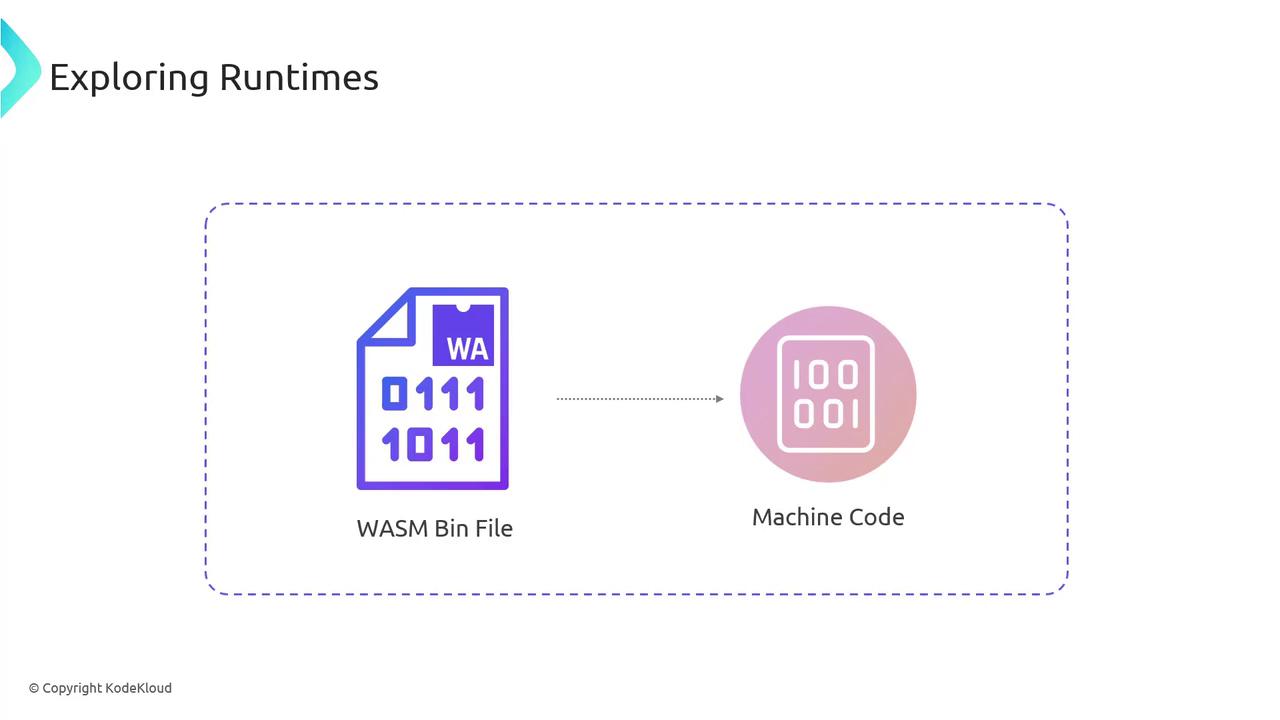
Ahead-of-Time (AOT) vs. Just-in-Time (JIT)
- AOT: Precompiles modules for predictable startup and performance.
- JIT: Compiles at runtime for flexibility and faster iteration.
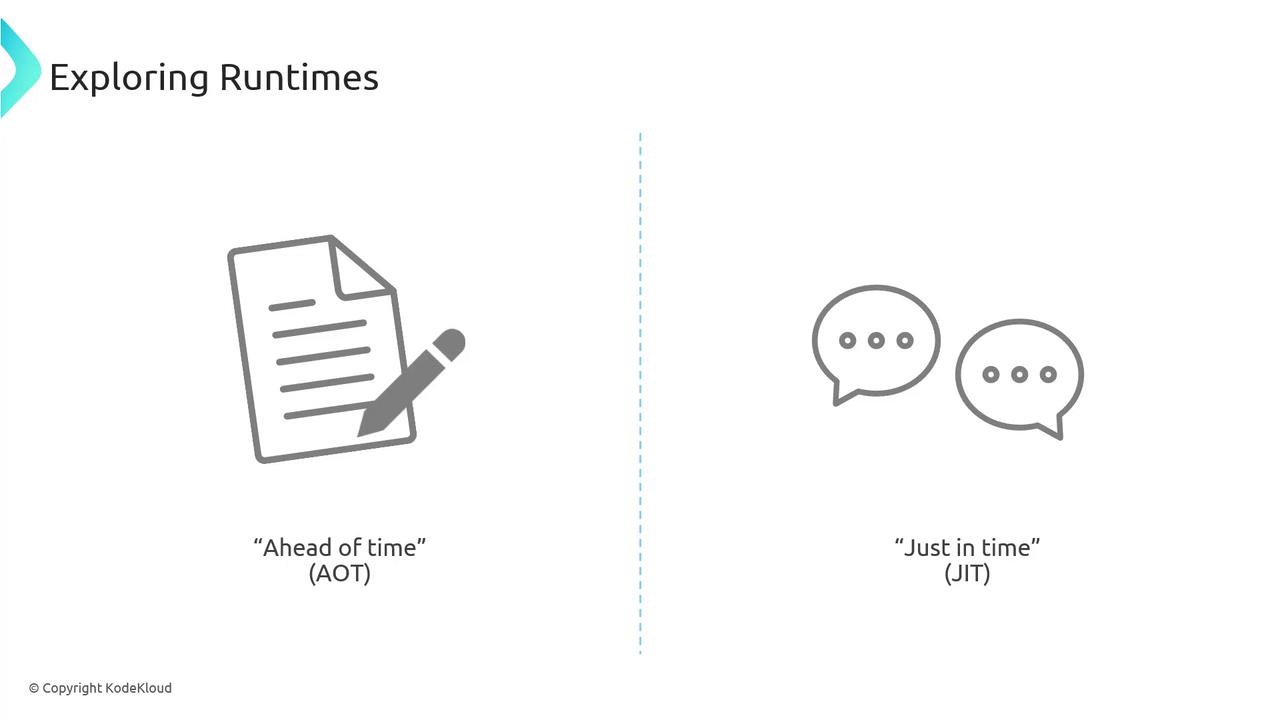
Execution & Isolation
Secure sandboxing ensures memory safety and resource limits.Host Interactions
The runtime mediates calls between WASM modules and host APIs (e.g., JavaScript in the browser or OS services on a server).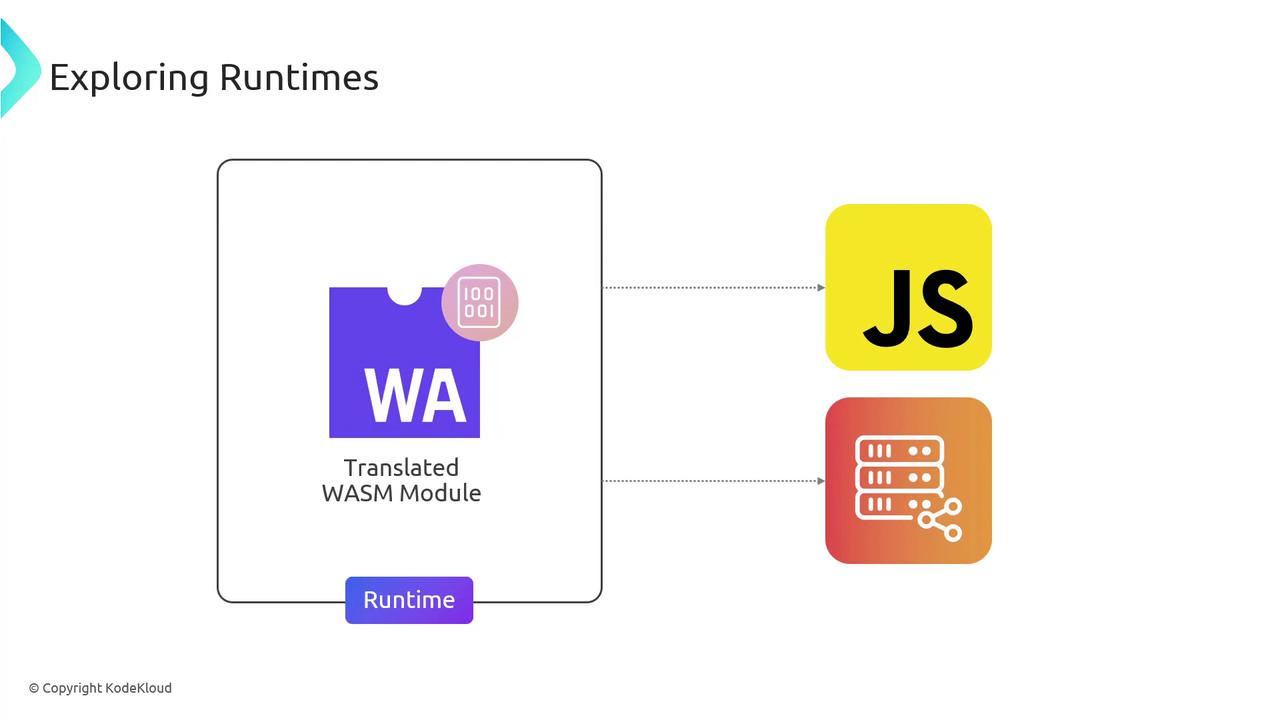
Result Delivery & Teardown
After running, the runtime returns outputs and frees resources.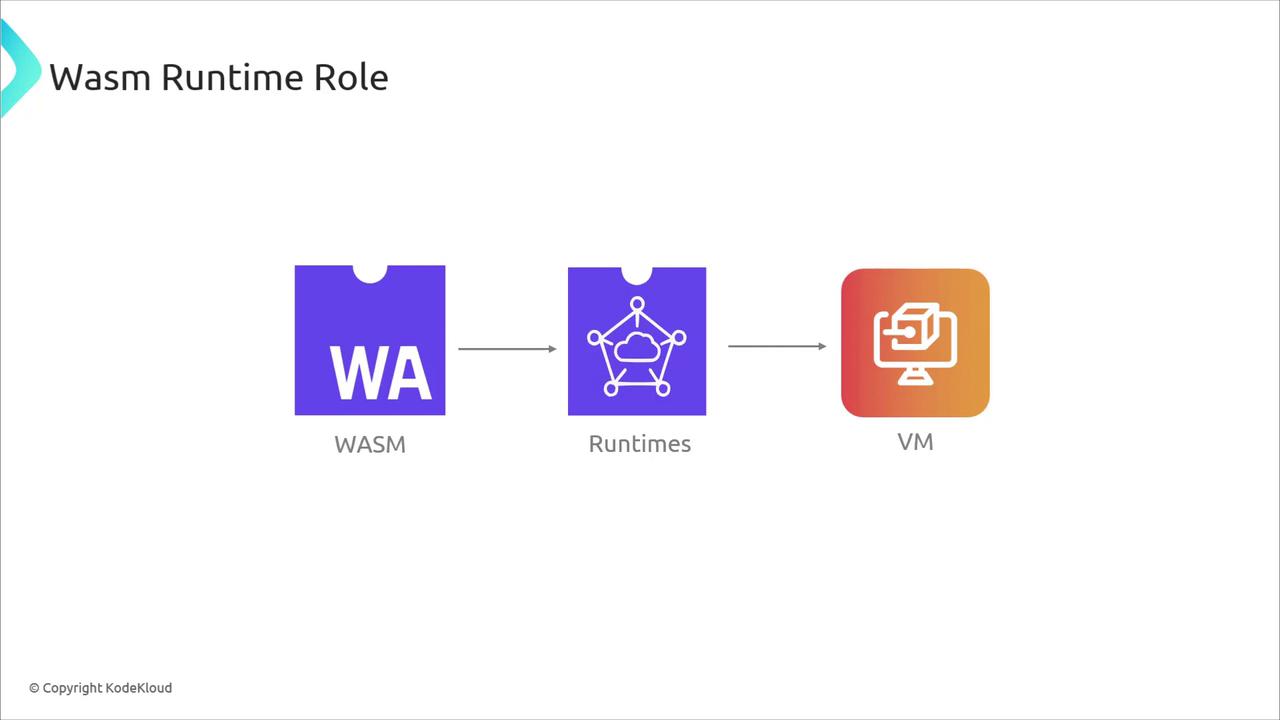
Note
Different runtimes may prioritize AOT or JIT differently. Choose based on startup latency, memory footprint, and security requirements.
Popular WASM Runtimes
Below are some of the leading runtimes in the WASM ecosystem, each with unique strengths.
Wasmtime
Wasmtime, developed by the Bytecode Alliance, is a standalone runtime optimized for both AOT and JIT through Cranelift. It can be embedded in Rust, Python, or C programs and scales from microcontrollers to cloud servers.![]()
WasmCloud
WasmCloud offers a service-oriented model for deploying WebAssembly microservices. It provides actor-based messaging, built-in key-value storage, and secure capabilities — perfect for polyglot cloud and edge workloads.
Learn more ›
Lucet
Also from the Bytecode Alliance, Lucet is an AOT-only runtime designed for untrusted code at the edge. It focuses on minimal latency, tight sandboxing, and predictable resource usage — powering platforms like Fastly’s Compute@Edge.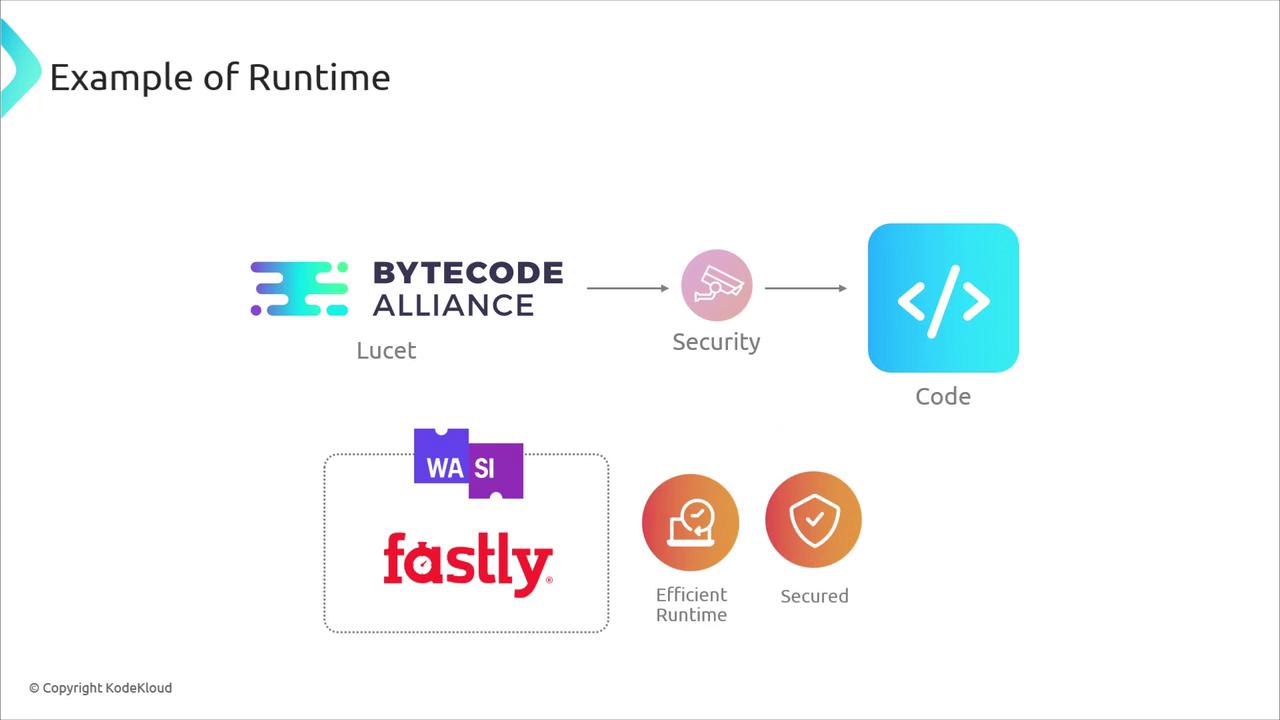
Wasm3
Wasm3 is a super-lightweight interpreter ideal for constrained devices. Written in pure C, it fits platforms from microcontrollers to servers and starts in under 20ms on typical hardware.
Learn more ›
WAMR
The WebAssembly Micro Runtime (WAMR) targets embedded systems and IoT. At its core is iWasm, supporting interpretation, AOT, and JIT within a minimal footprint that adheres to the W3C WASM MVP.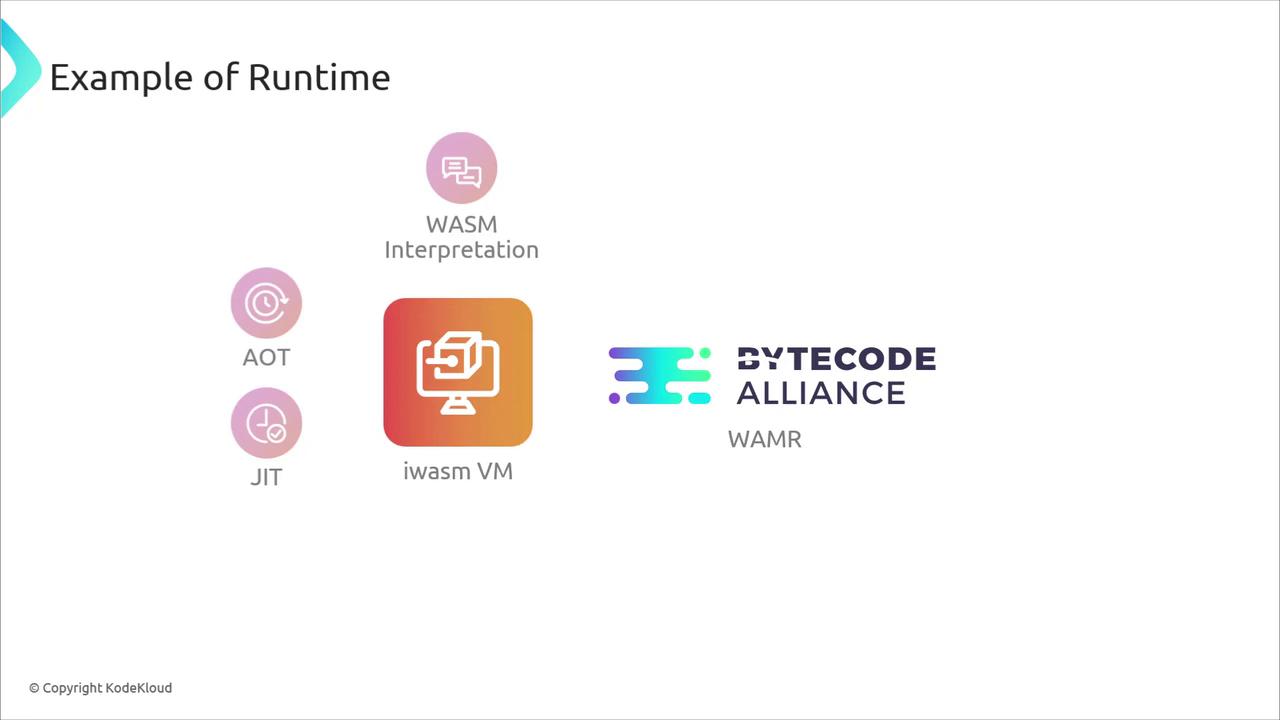
Runtime Comparison
| Runtime | Best For | Key Features |
|---|---|---|
| Wasmtime | General-purpose | AOT & JIT (Cranelift), embeddable in multiple languages |
| WasmCloud | Microservices | Actor model, secure capabilities, polyglot support |
| Lucet | Edge environments | AOT-only, minimal latency, strong isolation |
| Wasm3 | Resource-constrained | Ultra-portable interpreter, tiny footprint |
| WAMR | IoT & embedded | iWasm VM, AOT/JIT/interpretation, W3C-compliant |
Choosing the Right Runtime
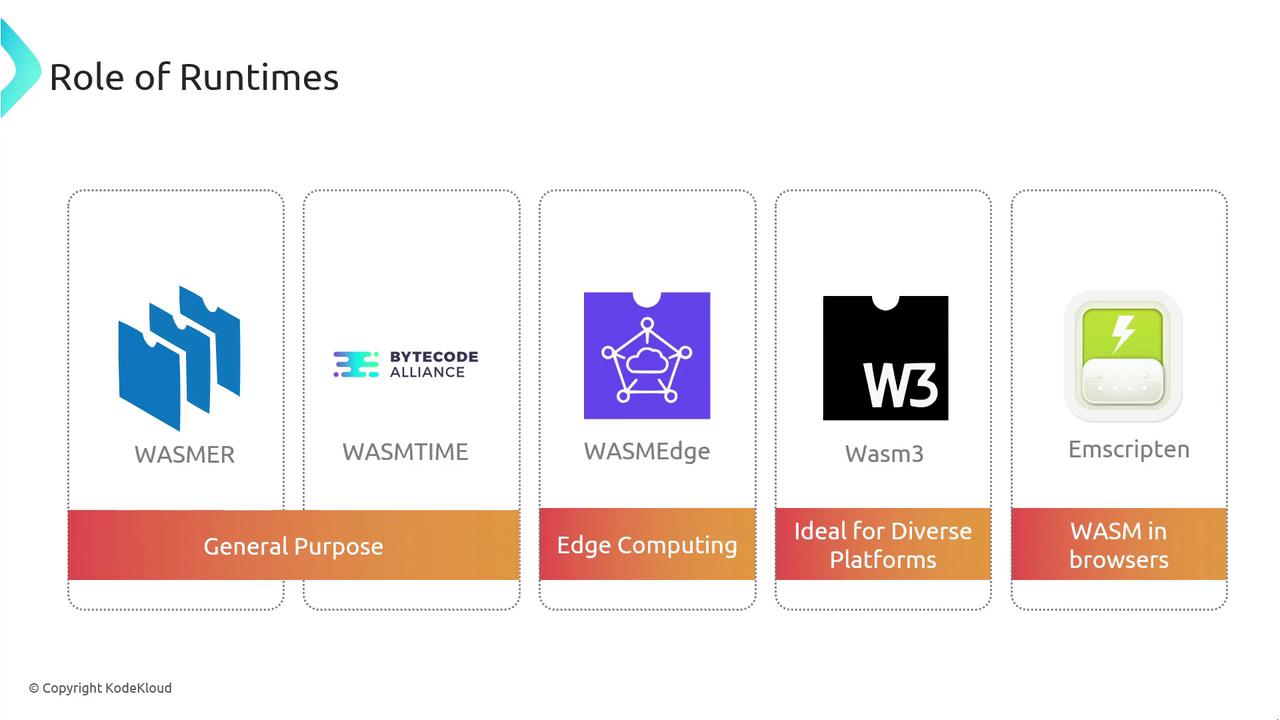
- Wasmtime & Wasmer: Versatile, embeddable, multi-language
- WasmEdge: High performance at the edge (WasmEdge)
- Wasm3: Best for minimal-resource devices
- Emscripten: Bridges C/C++ to browsers via WASM
Warning
When low startup time is critical, prefer AOT compilation. JIT may increase variability in performance and introduce additional dependencies.
References
- WebAssembly Official Site
- Bytecode Alliance
- Wasmtime Documentation
- WasmCloud Docs
- Lucet Docs
- Wasm3 Homepage
- WAMR GitHub
- WasmEdge
- Emscripten
Watch Video
Watch video content